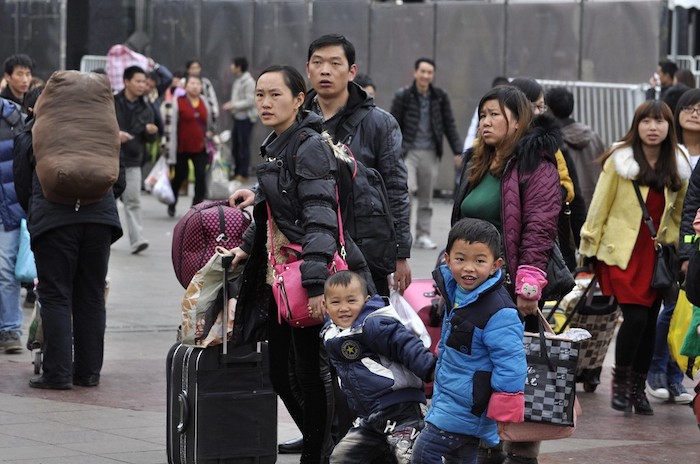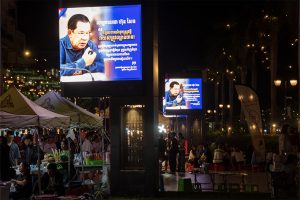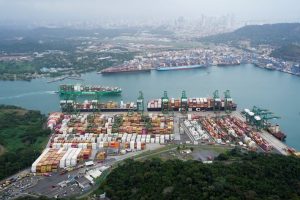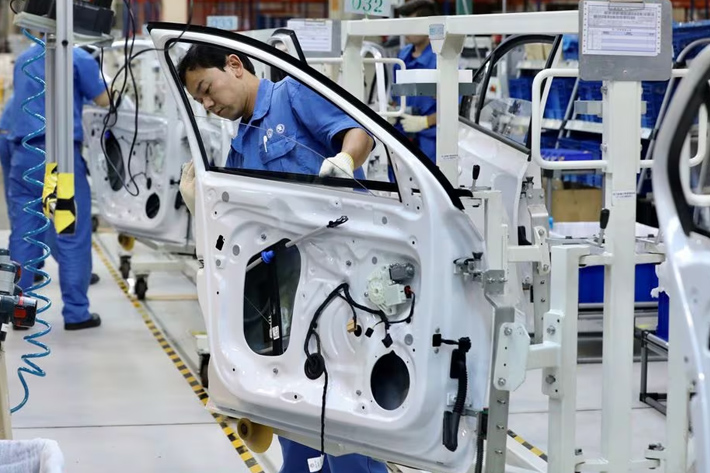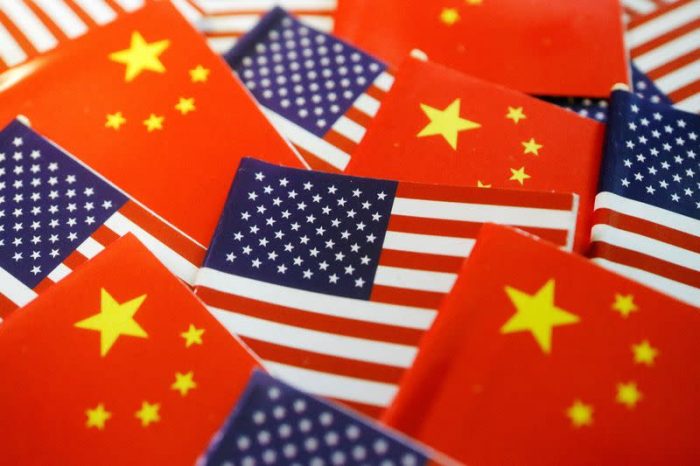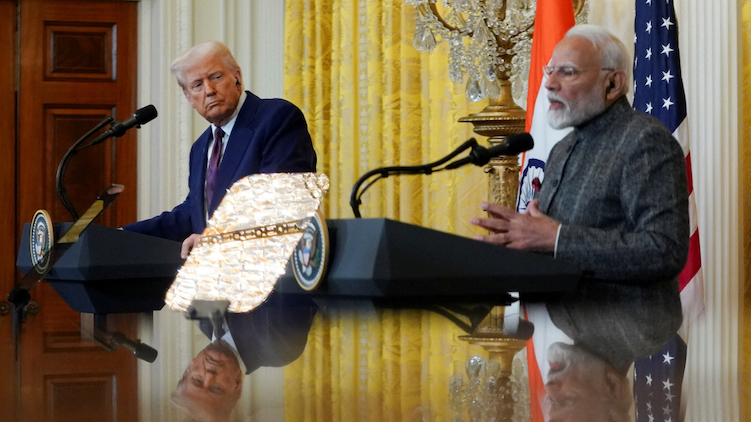Chinese workers are paying a high price for the country’s contentious trade policies and industrial overcapacity.
Tariffs imposed by the US to counter its massive trade deficit with China have spurred price-cutting by local factories and an employment crisis in manufacturing centres that is expected to worsen in coming months.
In Foshan city, in southern Guangdong province, Mike Chai, the boss of Cartia Global Manufacturing, has had to cut wage costs at his factory, which makes kitchen cabinets, by about 30% to remain competitive against rival companies. Other Chinese firms have stopped selling to the US due to steep tariffs and are now targeting his long-time customers in Australia.
ALSO SEE: US and China Defer Tariff Surge, Extend Trade Truce For 90 Days
Chai had already halved his workforce to 100 people since the pandemic and says he has no more room to trim. So, he is shortening shifts and has asked workers to take unpaid leave – an increasingly common practice that has become a hidden deflationary force in the world’s second-largest economy.
“We’re in survival mode,” said the 53-year-old, adding that his firm now “barely breaks even.”
“I told them, you don’t want our factory to go broke. You’ve worked here for 10-15 years, let’s do it together.”
China’s headline unemployment rate has held around 5% as US President Donald Trump raised tariffs on imports from China by 30 percentage points this year. On Monday, Washington and Beijing extended a tariff truce for another 90 days, during which tariffs will not return to April’s triple-digit levels.
But economists say under-employment – which, in common with other economies, is not tracked in data – is worsening due to higher levies and industrial overcapacity, squeezing workers’ income, undermining their confidence about the future and prompting them to spend less.
Consumer confidence lingers near record lows, retail sales have weakened, and inflation in July was zero.
Workers ‘hammered’ by lower prices
Alicia Garcia-Herrero, chief Asia-Pacific economist at Natixis, says it is China’s manufacturing workers who suffer while exports, and the economy, keep growing despite the US tariffs.
“It’s the people who are hammered by this model of huge competition, lower prices, thus you need to lower costs, thus you need to lower wages. It’s a spiral,” she said.
“The model is crazy. I’m sorry, but if you need to export at a loss, do not export.”
Statistics will not reveal Chinese workers as “the main losers” in the trade war because “they will not become unemployed, but they will get unpaid leave of absence or work fewer hours,” she added.
Chai has already lost two key customers in his main market of Australia after other Chinese firms cut their prices and his factory is operating at half-capacity. “A lot of new supply is knocking on my customers’ doors,” he said
While Chinese exports to the US dropped 21.7% year-on-year in July, they rose by 9.2% to the European Union, 16.6% to the Association of Southeast Asian Nations and 14.8% to Australia.
Chai plans to cut prices by about 10%. To afford that, he is also cutting overtime – which previously made up more than a third of workers’ income – from 28 days per month in total to about 10. On average, his workers earn 5,000 yuan ($697) a month before overtime.
Factory bosses are also turning to temporary workers, hiring them for new orders and dismissing them when demand dries up.
Dave Fong, who co-owns three factories in southern China making everything from school bags to climbing gear and industrial machinery, says he laid off 30 full-time workers at one of the plants, then rehired some of them on a temporary basis to fulfil unexpected orders.
“We prefer temporary contracts so we don’t need to pay pension or insurance,” said Fong. “It’s by day or by hour.”
“If we don’t do that, the company hits a dead end. The market is weak because consumption power has decreased. Another factor is trade, especially with the US.”
Decreasing pay, temporary shifts
Temporary work is common in China, especially among its nearly 300 million rural migrants.
Chen Chuyan, a recruiting agent in the central city of Wuhan, says the going rate has dropped to 14 yuan per hour from 16 yuan last year.
“There’s a long line of people waiting for job interviews every day, but the factories don’t have that much demand,” Chen said.
Alan Zhang has taken such jobs in Datang village, a cluster of small garment factories in the city of Guangzhou, since 2021. Back then, he earned 400 yuan a day, but now he struggles to find work paying even half that amount.
“If it’s just a couple hundred yuan, I won’t take it,” said the 30-year-old, after scanning handwritten ads for temporary work held by recruiters lounging on scooters.
“I don’t know what happened. Suddenly, it got really hard to find anything. Prices dropped fast,” said Zhang, who pays 700 yuan per month to rent a studio flat in Datang with his wife, who also works in clothing factories.
He worked just 14 days in July, which worries him because he must raise 10,000 yuan every year for his son’s kindergarten fees. The boy lives with his grandparents in Zhang’s hometown in neighbouring Fujian province.
“If manufacturing wages are being squeezed, then the wider economy would feel deflationary pressure,” Richard Yarrow, a fellow at Harvard Kennedy School’s Mossavar-Rahmani Center for Business and Government, said.
“This is definitely a growing issue for some of the lower-skill types of manufacturing in China, such as textiles, furniture, and simple electronics.”
Factory jobs
At the Longhua employment market in the tech hub of Shenzhen, dozens of people browsed bulletin boards for electronics factory jobs paying 17-28 yuan per hour.
Mo, 26, who has a degree in digital marketing but could not find a job in the field, had already had two interviews by early afternoon. He declined the offers because the terms were not as advertised.
“They’ll say 23 yuan, but actually give you 20,” said Mo, only giving his surname for privacy reasons. “Then they’ll take management fees, housing, cleaning, and whatever else they can deduct.”
Huang, 46, was checking the market for a fifth straight day, having arrived by bus from southwestern Yunnan province.
He managed real estate projects before the property market crash. Now he is divorced and lives on 10 yuan meals, paying 25 yuan per night for a bed in a dormitory. He cannot afford anything else until he finds work.
“I had one interview this morning, but they asked for an upfront placement fee of 80 yuan,” said Huang, dragging a small suitcase.
“So I didn’t go. I bought some food instead.”
- Reuters with additional editing by Jim Pollard
ALSO SEE:
Surge of Chinese Exports to Southeast Asia as Cargo to US Falls
India, Once Close to Deal With US, Now Faces 50% Tariffs
China’s Xi Issues Rare Warning on Over-Investment in EVs, AI – FT
Is China Finally Set to Rein in its Huge Industrial Overcapacity?
China’s Criticism of Price Wars Sheds Light on Xi’s ‘Waning’ Power
China’s Intense EV Price War Taking a Toll on Car Dealers
A Deflationary Spiral Looms Over China as Overcapacity Bites
Solar Overcapacity Kills Projects, Fuels Bankruptcies In China
Creative Ideas Needed to Stem China’s Overcapacity: US Official




